What lovers of unusual delicacies don’t introduce into the diet: frog legs and blue dumplings can be found in the menu of different countries. The process of giving originality and cheese did not pass by. Even 7000 years ago, this product was eaten exclusively “clean” - at the slightest hint of mold, it was immediately thrown away. Nowadays, blue cheese is a frequent guest at grocery store shelves. Where did this delicacy come from and what is its peculiarity?
Material Content:
Blue cheese: names of species and varieties

According to legend, the formation of mold cheese is due to chance. In the town of Roquefort, about 2000 years ago, a French shepherd forgot his lunch - bread, cheese and water - in a cave. After a month, the loss was found and for some reason (possibly due to the lack of other food and severe hunger), the man ate stale foods. The cheese covered with bluish mold had a salty, spicy flavor and was extremely liked by the shepherd. The inhabitants of his village appreciated the discovery of the shepherd and deliberately began to put the cooked cheeses into caves. That is how Roquefort appeared - the first blue cheese. In the 15th century, the cheese-makers of this province received permission from the king to produce this original cheese. Today, a fragrant product with a wonderful nutty flavor is famous all over the world.

Of course, over the past centuries, the technology for making cheeses has changed, as has the geographic distribution of goodies. Today, cheeses with mold are made not only in France, but also in Italy and the UK.
What is the name of blue cheese and its many varieties?
The “names” of a product are largely dependent on the color used in the manufacturing process.
White cheese
This product is well recognized from the variety of numerous "brothers" on the shelves in stores. Fluffy white mold is visible on top of the product. Cheeses smell of dried grass, fungi and moss - this smell seems to plunge the consumer into the charm of an autumn forest.
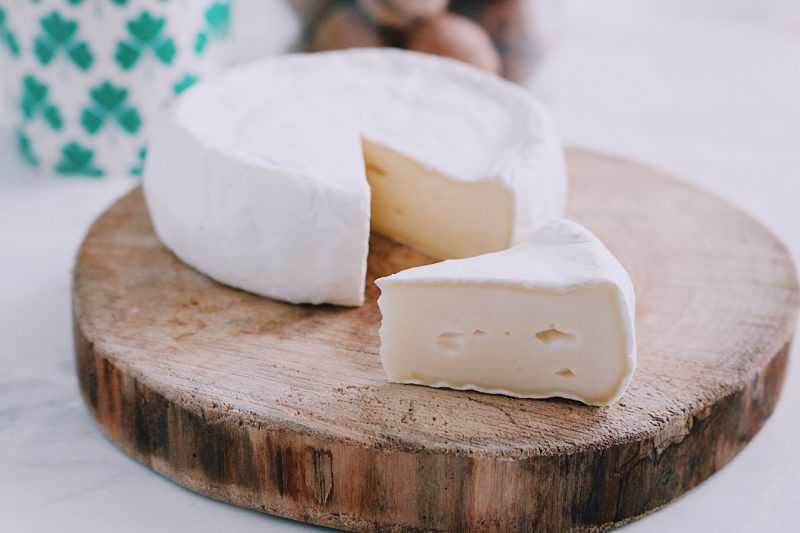
Varieties of white cheese are represented by the names Bulette Daven, Brie, Neuchatel and Camembert.
- Bulette-daven. The product owes its name to the French town of Aven, in whose honor cheese is named. It is made in the form of original triangles weighing about 300 grams, flavored with spices. Cheese ripens for 2-3 months.
- Bree. The most popular white cheese. It has long been considered a favorite dessert of many French kings. Young cheese has a mild and delicate taste, while older cheese is spicy.
- Neuchatel. Norman cheese, covered with a dense crust with clearly visible mold on the surface. It has a bright mushroom flavor.
- Camembert. A variety of fatty cheese ripening from September to May (the product does not like heat). It is made from cow's milk. In a delicate creamy taste, mushroom notes are easily distinguishable.
Red mold
Another interesting subtype of piquant delicacy is products with red, burgundy or orange mold.
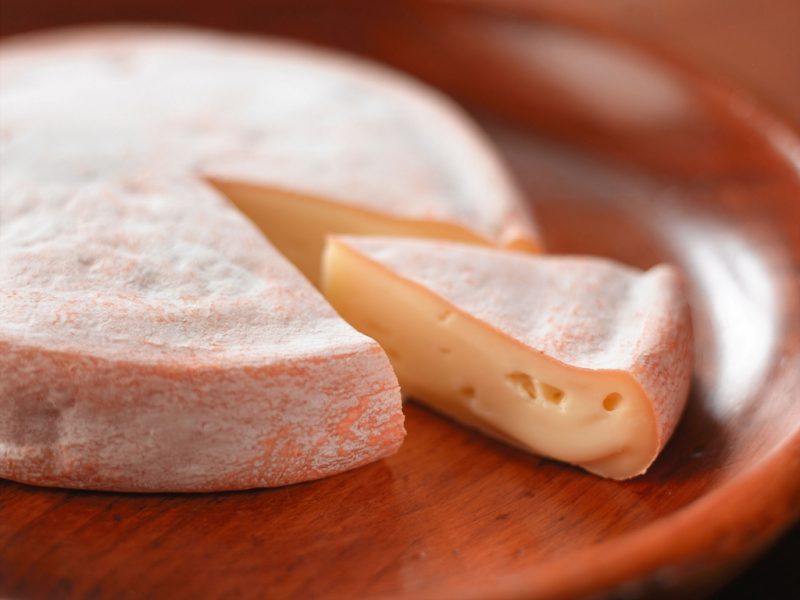
The cheese gets an unusual shade as a result of washing technology during the ripening period:
- Camembert dipped in cider. As a result, the product is covered not with white, but with red mold, and the taste in cheese is much sharper than in the classic version.
- German Limburg. The aged cheese is tied with reed and then irrigated with water, to which the dye of annatto is added.
- Epuas. “They try” Burgundy vodka, which is based on red grapes.
Blue cheese
Blue mold was opened recently. It is allowed for official use as part of certain types of products, including cheese.

The most popular types of blue cheese:
- Roquefort. Yes, yes, the one languishing in the cave for so long. To this day, they send him to mature in special caves with the desired level of humidity and temperature. In the process of blue mold formation, rye bread is involved, and so that it is not only outside but also inside the cheese, it is pierced with needles.
- Gorgonzola. Based on cow's milk Italian cheese. The cooking technology resembles Roquefort, but Gorgonzola ripens longer - 4 months, and not 3, like her French counterpart. The taste of cheese is piquant and pungent.
- I’m gonna do it. The cheese recipe was created at the beginning of the last century in Germany (by the way, the recipe is kept secret, to this day). Unlike previous options, this cheese has a milder taste.
- Stilton. English cheese based on cow's milk. For full readiness, it is aged 9 weeks. It is considered the budget equivalent of Dorblu.
- Danablou. Comparatively young cheese in terms of creating recipes. It ripens for 3 months and exists as a budget substitute for Roquefort. Unlike the latter, Danablu has a more salty taste.
What is useful and harmful product
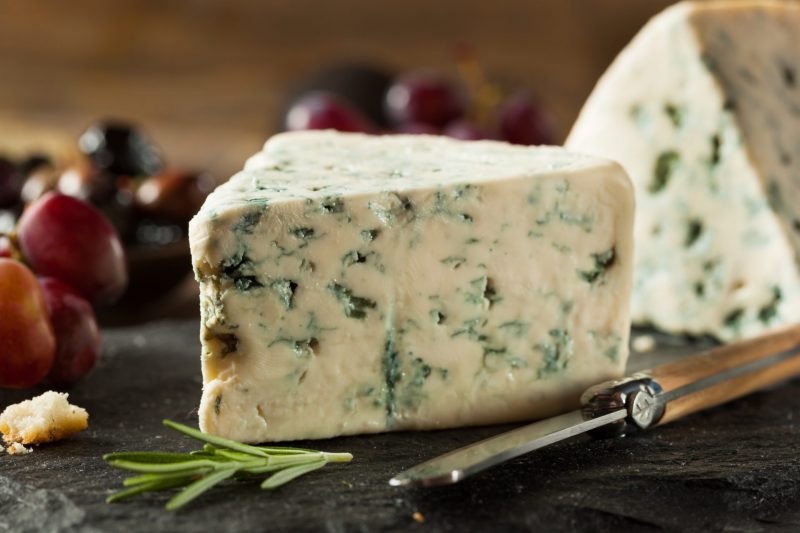
It turns out that cheese with penicillin is not only tasty, but also healthy, and this is what:
- Restores the acid-base balance of the oral cavity. Thus eliminating bad breath.
- Helps to eliminate toxins from the body.
- Protects the skin from the harmful effects of UV radiation. In addition, “moldy” cheese is an effective prevention of wrinkles.
- Fights gastrointestinal disorders.
Blue cheese is considered harmful for:
- pregnant women;
- little children;
- patients diagnosed with enterocolitis, ulcer or pancreatitis;
- people with pathologies of the endocrine system.
How to eat blue cheese
Blue cheese is a delicacy widely used in many cuisines of the world. The product will be an excellent delicacy, both an independent dish, and in tandem with other products.
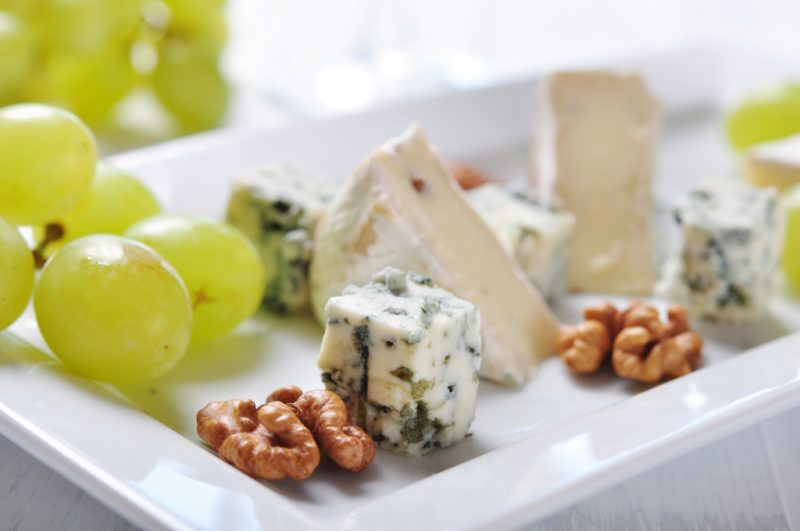
Cheese is best combined:
- with fruits. Figs, pears, apples are served with cheese;
- with nuts. Cheese perfectly "gets along" with walnuts or almonds;
- with wine. It should be borne in mind that for each type of cheese a certain alcoholic drink is suitable. So, for Roquefort, you should choose sweet wines such as port or sauternes. These drinks emphasize the harsh taste of the goodies. Soft cheeses (Brie or Camembert) go well with sparkling wines.
Blue Cheese Recipes
The delicacy with mold is often used in the preparation of various dishes in many countries of the world. Treats from it can be prepared in your own kitchen:
Salad
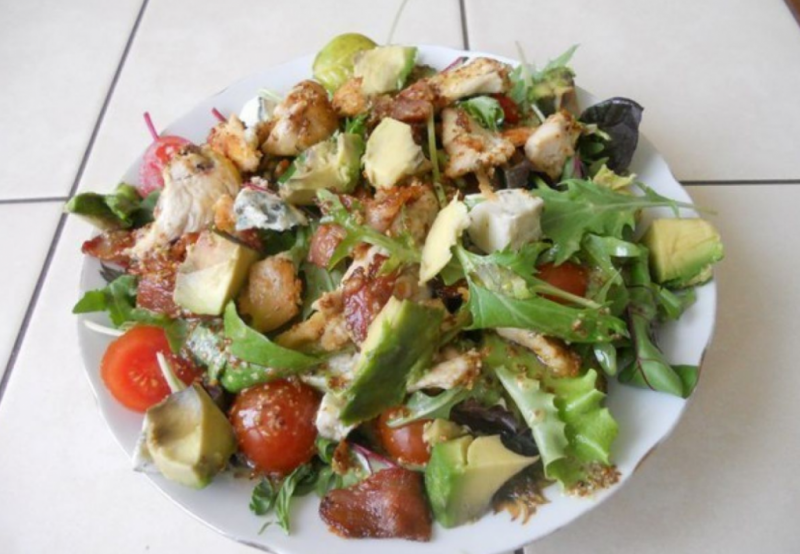
Ingredients:
- chicken fillet - 1 pc.;
- avocado - 1 pc.;
- bacon - 150 g;
- cherry tomatoes - 10 pcs.;
- Roquefort - 150 g;
- eggs (quail) - 4 pcs.;
- salad (leaves) - 5 pcs.
Cooking:
- Fry bacon, pass the fillet in the same oil.
- Cut avocados, eggs and tomatoes into slices.
- Spread the ingredients in a circle: salad, eggs, cheese, bacon and chicken, avocado and, finally, tomato.
- Pour olive oil into the salad.
Sauce
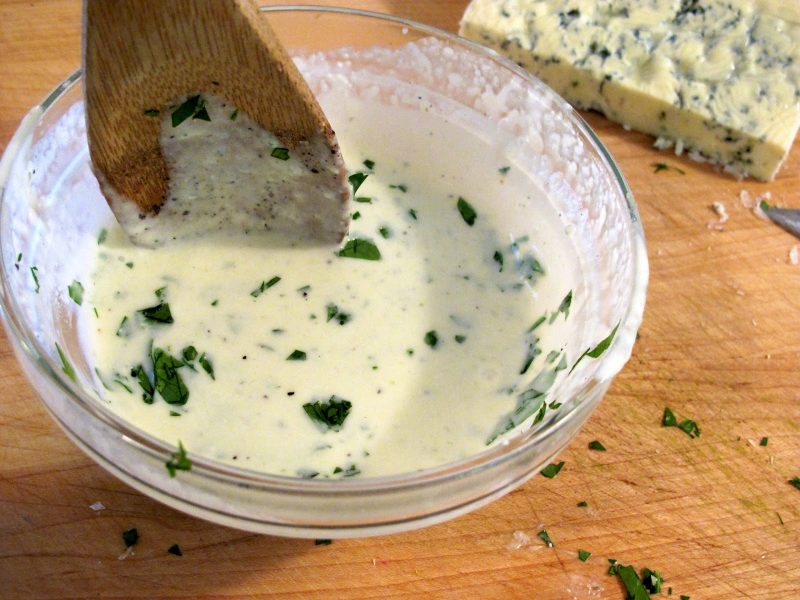
Ingredients:
- Roquefort - 100 g;
- cream - 200 ml;
- black pepper to taste.
Cooking:
- Cook the cream over low heat until thickened.
- Add sliced cheese, cook until completely mixed with cream.
- Season the sauce with pepper to taste.
Blue cheese - an original product with bright taste. Invented more than 2000 years ago, the recipe for cooking does not lose its popularity to this day. Cheeses with white, red or blue mold are the favorite delicacies of gourmets around the world.












